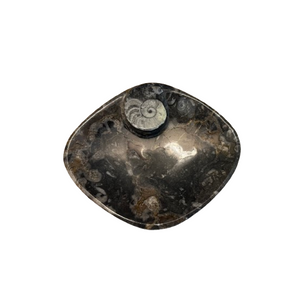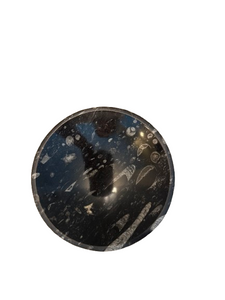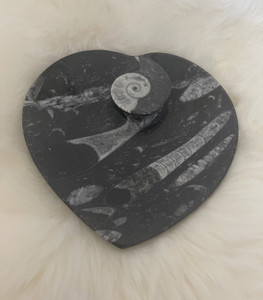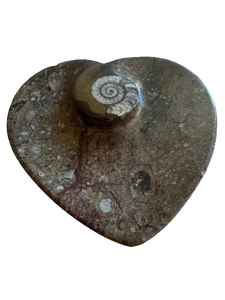
Ammonites Fossil Shells | Whole | Cut in Half and Polished | Made in Madagascar
LifeXploreAmmonites Fossil Shells. Whole. Cut in Half and Polished. Made in Madagascar
These fossils (multiples available - so may vary from the photo) are rough on the outside and cut and polished on the inside.
Display on a stand. Use as a paperweight. Give as a gift to your favorite rock hound. Fascinating pieces!
Approx. 4.5-5" W
About Ammonites
Ammonites have intrigued and fascinated humans for thousands of years. Many cultures from aboriginal bushmen in Australia, to the ancient Egyptians collected and treasured these prehistoric and beautiful fossils. Does it have anything to do with that Fibonacci spiral pattern of ammonites that mirrors the galaxies?
Ammonites belong to the Mollusca Phylum in a separate Class known as Cephalopods - the head-footed creatures like the present day octopus and squid. They swam in ancient oceans from the Devonian (about 400 million years ago) to their extinction along with the dinosaurs in the Cretaceous, 65 million years ago.
These incredible invertebrates ranged in size from tiny creatures only a few centimeters in diameter to the monstrous Cretaceous ammonite Parapuzosia (Pachydiscus) seppenradensis which grew to about 3 meters in diameter and would probably of weighed in at close to 1500 kgs!
Cut and Polished Cleoniceras Ammonites
Our beautiful Madagascar ammonites (Cleoniceras cleon) have been cut and polished to show the gorgeous pattern and mineralization of the flotation chambers. They date back to the Albian of the Lower Cretaceous, approximately 110 million years ago.
In cut and polished ammonites it is easy to see the gorgeous flotation chambers, which are separated by walls called septa. Ammonites are classified into 3 groups by their septa pattern - goniatite (irregular zigzags), ceratite (regular wavy) and ammonite (fern-like). The inner chambers of the ammonite called the phragmocone were sealed from the outer body chamber and became mineralized over a long time period when the ammonite died whereas the outer body chamber rapidly filled with mud leaving a dark grey or single monotone color in the fossil. Many of the inner chambers have become filled with beautiful crystals such as yellow calcite.












